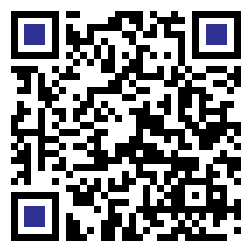Prediksi Understandability Pada CK Metrics Object Oriented Menggunakan Fuzzy Inference System
DOI:
https://doi.org/10.54367/means.v5i2.957Keywords:
fuzzy inference system Mamdani, software quality, chidamber kemerer metrics.Abstract
The ability of the software to easily understand it is very important, to evaluate the performance of a system or process a certain mechanism is needed. So that the achievement level of software development is obtained, the assessment of code quality and design in the metrics have different contributions to the quality properties of software design. The assessment of software characteristics is described in a model based on the Chidamber Kemerer (CK) Entropy Metrics design property indicator. Measure specific properties of the software by mapping them into numbers according to objective and well-defined measurement rules. To be able to help perform the software quality calculation process based on CK metrics on the eclipse equinox data by using the Mamdani fuzzy inference system, pointing the classification into low which can be interpreted as having good quality. And the value affirmation of the deffuzzyfication method in this case is done by using the COA (center of area) method, to determine the crisp x value, obtained from the membership function formed from the composition process of all outputs.References
A. Shri, P. S. Sandhu, V. Gupta, and S. Anand, “Prediction of Reusability of Object Oriented Software Systems using Clustering Approach,†vol. 4, no. 7, pp. 1174–1177, 2010.
A. Halim, A. Xandra, and A. Sim, “Mengukur Tingkat Reusability dan Efficiency dari Kode Program dengan Pendekatan Fuzzy Logic,†vol. 4, pp. 109–114, 2015.
M. R. J. Qureshi, “Evaluation of the Design Metric to Reduce the Number of Defects in Software Development,†no. April 2012, 2015, doi: 10.5815/ijitcs.2012.04.02.
I. Turnu, M. Marchesi, and R. Tonelli, “Entropy of the degree distribution and Object-Oriented Software Quality,†no. June, 2012, doi: 10.1109/WETSoM.2012.6226997.
M. Nazir, R. A. Khan, and K. Mustafa, “A Metrics Based Model for Understandability Quantification,†no. April, 2010.
A. September, “IEEE Standard Glossary of Software Engineering Terminology,†vol. 121990, 1990.
Y. Suresh, J. Pati, and S. K. Rath, “Effectiveness of Software Metrics for Object-oriented System Effectiveness of software metrics for object-oriented system,†no. December, 2012, doi: 10.1016/j.protcy.2012.10.050.
V. Axelius, K. Siren, N. Y. Setiawan, and R. I. Rokhmawati, “Evaluasi Kualitas Perangkat Lunak Menggunakan ISO / IEC 9126-4 Quality In Use ( Studi Kasus : FILKOM Apps ),†vol. 3, no. 2, pp. 1625–1632, 2019.
U. S. Utara and U. S. Utara, Analisis Kinerja Fuzzy AHP dalam Perangkingan. 2018.
P. K. Bhatia and R. Mann, “An Approach to Measure Software Reusability of OO Design An Approach to Measure Software Reusability of OO Design,†no. January 2008, 2015.
M. Borys, “Metrics of Object Oriented Software,†no. May, 2014.
J. Mago, “Analysis of Quality of the Design of the Object Oriented Software using Fuzzy Logic,†pp. 21–25.
Downloads
Published
How to Cite
Issue
Section
License
Copyright (c) 2020 MEANS (Media Informasi Analisa dan Sistem)

This work is licensed under a Creative Commons Attribution 4.0 International License.














